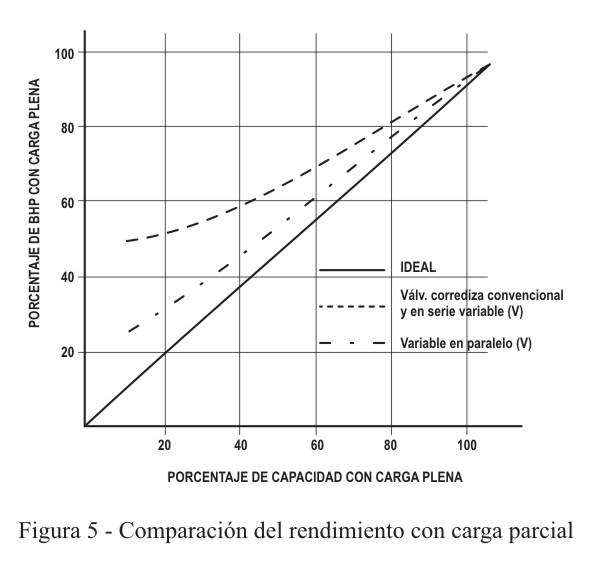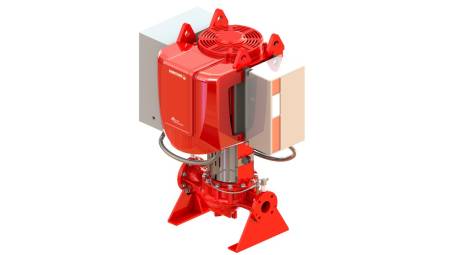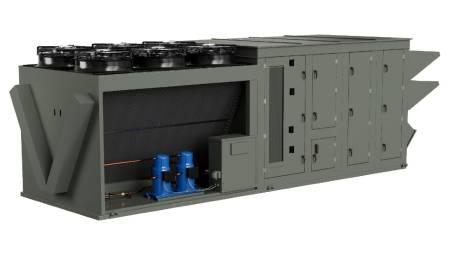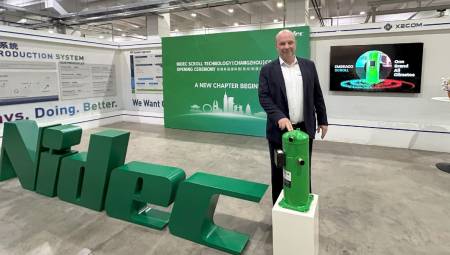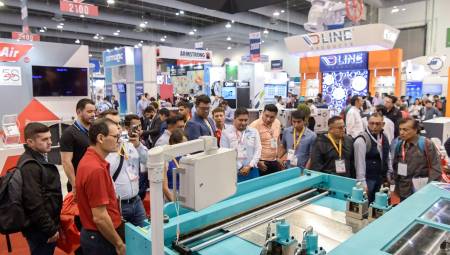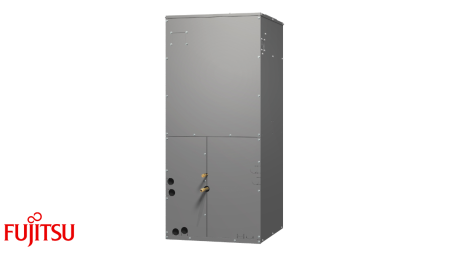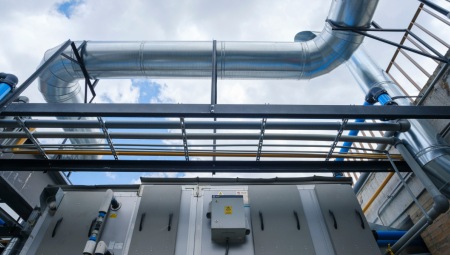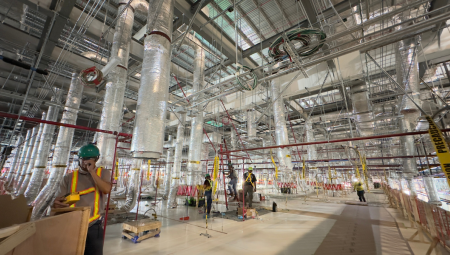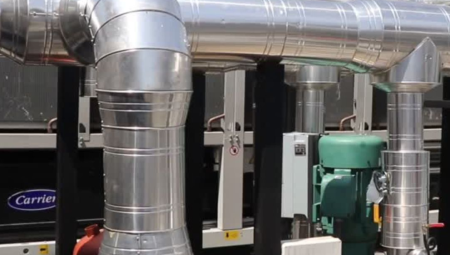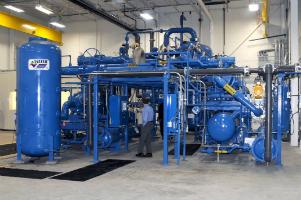 This article examines the current twin-screw technology for variable volume ratio and shows why the single-screw compressor is even better.
by Germán Robledo*
This article examines the current twin-screw technology for variable volume ratio and shows why the single-screw compressor is even better.
by Germán Robledo*
Until recently, the screw compressor had the disadvantage of a fixed integrated volume ratio. It wasn't that there wasn't a better solution: ideas of the variable volume ratio have been around for a while now. But only recently could the aggregate cost of that feature be recovered in running costs. The reason for this change, of course, is the rising cost of energy.
Before we get into an explanation of the variable volume ratio, let's examine the configuration of the conventional slide valve discharge in a twin-screw compressor and in a single-screw compressor. The principle of operation of the two types of compressor is the same, although the single-screw compressor has two slide valves, one on each side of the machine while the double screw has only one and under the screws.
See Figures 1, 2, and 3 for the explanation below. In both cases, the slide valves are located in the case or main housing, forming a part of the rotor or screw hole. Discharge is achieved by moving the slide valve into the machine's discharge port, which opens the propeller back to the suction port. This allows a portion of the gas that is compressed to be diverted back to suction, thus lowering the capacity.
The degree of capacity reduction depends on how much the propellers are opened to suction. In addition to diverting the steam back to suction, the movement of the slide valve does several things:
1.Change the point at which the compression process or compression initiation begins. The suction volume is reduced because the length of the gas-filled screw is less. Compression does not occur until the propellers pass past the rotors (or screw) rotating beyond the suction end of the slide valve and discharge port. Figure 3b shows this reduction in suction volume from V1 to volume index.
2.Change the point at which the download or download initiation process begins. This is evidenced by the fact that the slide valve forms a part of the discharge port.
The download process, as described above, is only partially effective in maintaining the volume ratio. At some point in the discharge cycle, the mobile discharge port disappears (moves beyond the end of the rotors (or screw). As there is no longer a radial discharge, the gas must exit axially through a fixed port. In a twin-screw compressor, the fixed port is located on the face of the axial end, as shown in Figure 1.
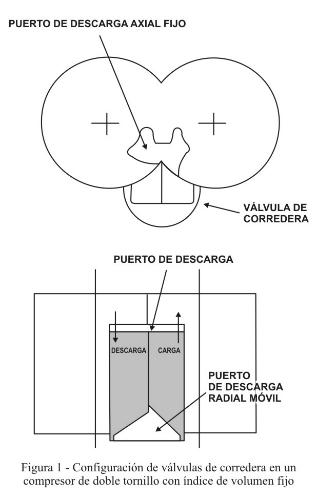 In a single-screw compressor, it is located just below the slide valve, as shown in Figure 2.
In a single-screw compressor, it is located just below the slide valve, as shown in Figure 2.
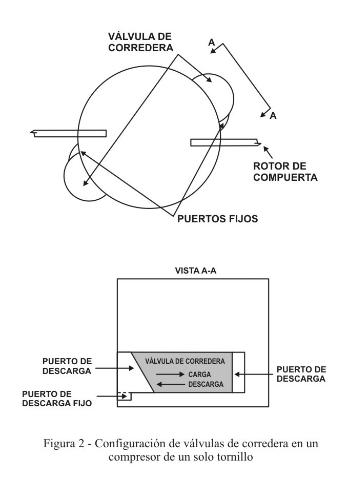 During the discharge cycle, as soon as the mobile discharge port moves beyond the fixed port, the built-in volume ratio begins to drop. The net result is inefficient operation with part load. Figure 3 illustrates this using P-V diagrams. Depending on the design of the slide valve, the volume ratio begins to fall to 50% of the capacity for a computer with a volume index of 2.6, to 70% for a computer with a volume index of 3.6 and immediately (100%) for an equipment with a volume index of 5.0.
During the discharge cycle, as soon as the mobile discharge port moves beyond the fixed port, the built-in volume ratio begins to drop. The net result is inefficient operation with part load. Figure 3 illustrates this using P-V diagrams. Depending on the design of the slide valve, the volume ratio begins to fall to 50% of the capacity for a computer with a volume index of 2.6, to 70% for a computer with a volume index of 3.6 and immediately (100%) for an equipment with a volume index of 5.0.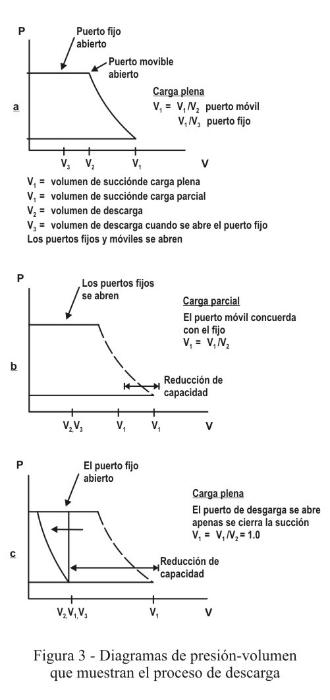
So it can be seen that controlling the volume ratio with partial load results in a significant improvement in the efficiency of operation with partial load. Now let's look at the current technology for twin-screw compressors with variable volume. This is achieved by adding another slide valve at the suction end of the conventional slide valve (see Figure 4).
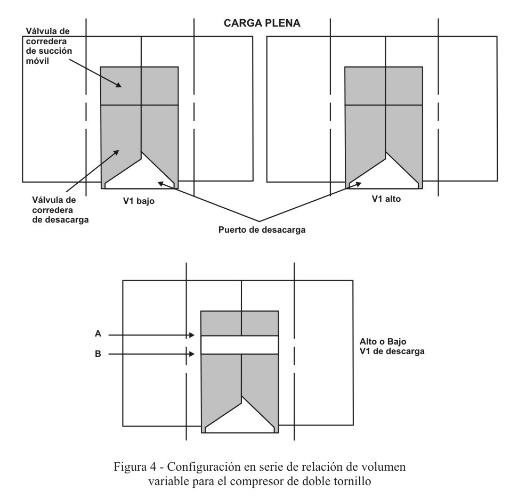 This end-to-end configuration of slide valves can be called a serial configuration. For full-load operation, the two slide valves move together as a unit to control the ratio of being trapped inside the screw propellers before allowing it to exit.
The movement of the slide valves back and forth in response to operating conditions effectively controls the volume ratio. For an application that operates under pressures other than ideal design conditions, the savings in running costs are shown in Figure 2 of Chapter 1.
It can be seen that the control of the volume ratio with full load saves from 1 to 2% in those in the conventional system. It can be argued that the movement of the suction slide valve towards the discharge increases the volume ratio. This also increases the losses associated with suction by increasing. Our tests show a significant loss of efficiency with a high speed through the port than with higher speeds and pressure drops through the discharge port.
Bringing the suction side closer to the discharge end raises the groove pressure before it deviates to running costs by adjusting to normal variations in head pressure due to changing environmental conditions. However, with partial load this system is no longer more efficient than a conventional sliding valve system.
The reason for this is that the suction end of the discharge slide valve (legend B in Figure 4) controls the degree of discharge of the compressor. As soon as the compressor starts unloading, the volume ratio stays the same in volume. The greater extension of the two slide valves towards the compressor discharge prolongs the time that the gas discharges. The result of all this is that, with the discharge and suction slide valve organized in series, only very little (or no) energy savings are possible when operating at partial load.
This brings us to Vilter PARALLEX TM's patented variable volume ratio feature for the single-screw compressor. This design uses a side-by-side or parallel sliding valve configuration (see Figure 5) for a total of 4, two on each side. The advantage of this configuration is that the size of the download port (and therefore the volume index) is completely independent of capacity control.
This end-to-end configuration of slide valves can be called a serial configuration. For full-load operation, the two slide valves move together as a unit to control the ratio of being trapped inside the screw propellers before allowing it to exit.
The movement of the slide valves back and forth in response to operating conditions effectively controls the volume ratio. For an application that operates under pressures other than ideal design conditions, the savings in running costs are shown in Figure 2 of Chapter 1.
It can be seen that the control of the volume ratio with full load saves from 1 to 2% in those in the conventional system. It can be argued that the movement of the suction slide valve towards the discharge increases the volume ratio. This also increases the losses associated with suction by increasing. Our tests show a significant loss of efficiency with a high speed through the port than with higher speeds and pressure drops through the discharge port.
Bringing the suction side closer to the discharge end raises the groove pressure before it deviates to running costs by adjusting to normal variations in head pressure due to changing environmental conditions. However, with partial load this system is no longer more efficient than a conventional sliding valve system.
The reason for this is that the suction end of the discharge slide valve (legend B in Figure 4) controls the degree of discharge of the compressor. As soon as the compressor starts unloading, the volume ratio stays the same in volume. The greater extension of the two slide valves towards the compressor discharge prolongs the time that the gas discharges. The result of all this is that, with the discharge and suction slide valve organized in series, only very little (or no) energy savings are possible when operating at partial load.
This brings us to Vilter PARALLEX TM's patented variable volume ratio feature for the single-screw compressor. This design uses a side-by-side or parallel sliding valve configuration (see Figure 5) for a total of 4, two on each side. The advantage of this configuration is that the size of the download port (and therefore the volume index) is completely independent of capacity control.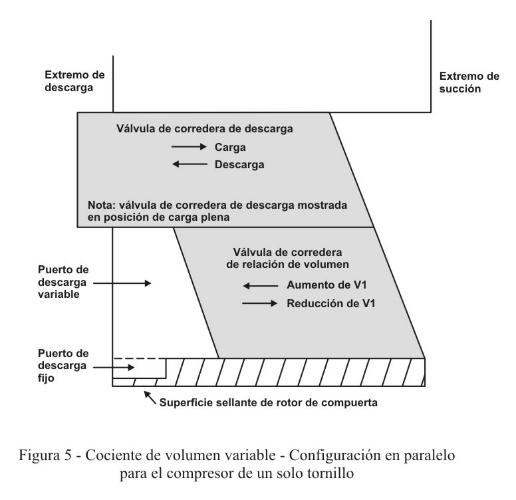
For full-load operation, there is no difference in efficiency compared to the serial configuration. The volume ratio slide valve is positioned simply to maintain the correct volume ratio. For part-load operation, the discharge slide valve is positioned to maintain the desired capacity while the volume ratio valve is positioned to maintain the correct volume ratio.
This means that the volume ratio accurately matches the operating conditions for both partial and full load. In addition, the size of the fixed discharge port has been adjusted so that the volume index is controlled up to 30% of the capacity with full load with a volume index of 3.6. Volume ratio control for part-load operation gives the parallel configuration of slide valves an obvious advantage over series configuration.
Another discharge point that should be mentioned (unique to the single-screw compressor) is the symmetrical discharge location opposite 180 degrees. This method takes advantage of two compression areas independent of the single-screw compressor. As each side requires a slide valve, the compressor can be discharged simultaneously but on the sides. The result is a performance equal to a conventional compressor with simple slide valves but with the effect of balancing the forces and eliminating both noise and vibration from the compressor. In this way, better control of the volume ratio improves efficiency, eliminates noise and vibration compared to an axial discharge and simple guidance.
Figure 6 provides a performance comparison between the various slide valve configurations. From 100% to 50% of the capacity, the parallel configuration of the slide valves saves from 2 to 3% compared to a conventional configuration and a series of such valves. Below 50% capacity, the savings are much higher. If you translate this into dollars saved for a 600 ft3/min compressor that extracts 250 BHP at full load and at 7¢/kWh, the savings in running costs are $3430/year. This saving is based on the assumption of full-load and partial-load operating cycles as follows:
- 20% capacity 20% of the time
- 60% capacity 40% of the time
- 100% capacity 40% of the time
Thus it can be seen that, in order to obtain the best possible efficiency of the screw compressor, the control of the volume ratio is very important the configuration of parallel slide valves for the variable volume ratio has a clear advantage over other methods by saving energy for operation with partial load.